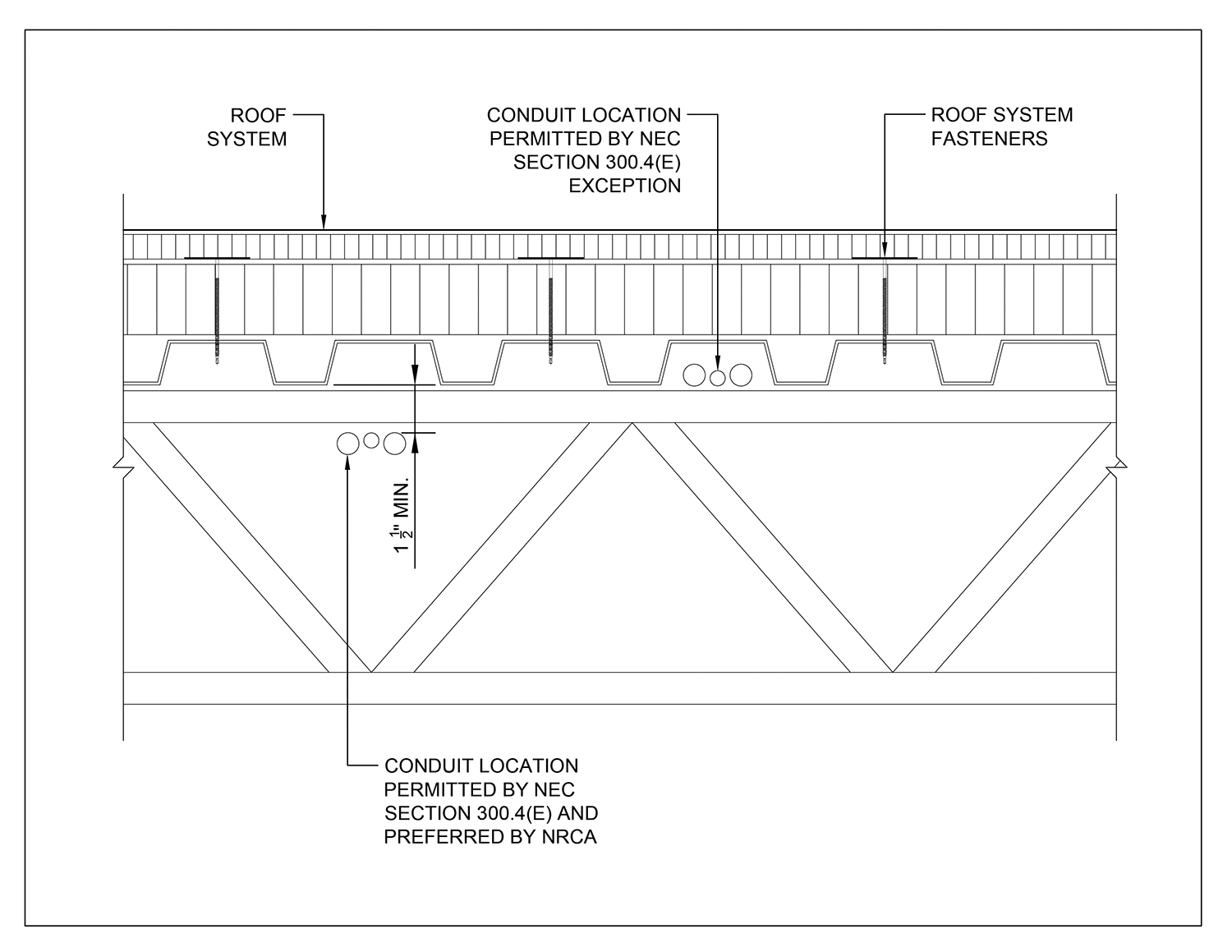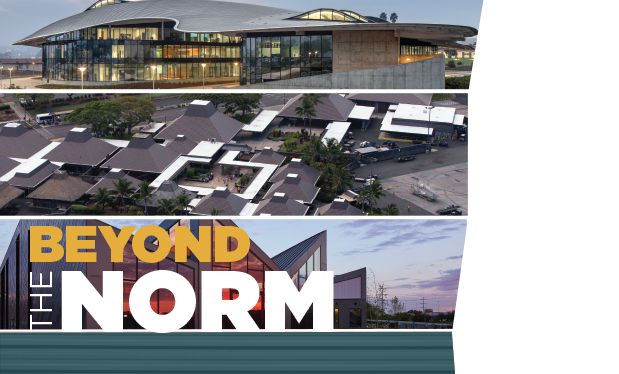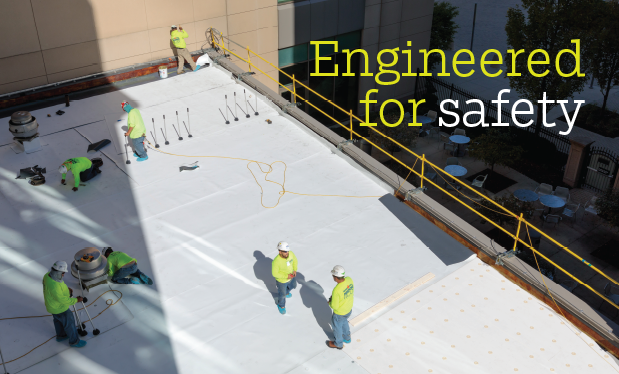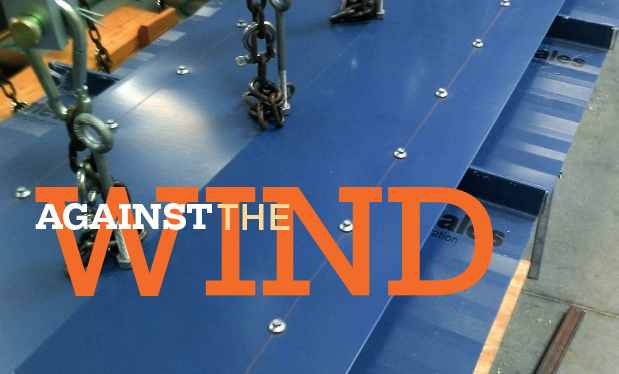During roof system replacement and sometimes when mechanically attaching rigid board insulation or roof membranes, roofing workers can encounter electrical conduit embedded within roof assemblies or placed directly beneath roof decks. In many instances, the presence of electrical conduit is unforeseen, problematic and potentially dangerous.
Electrical code
The National Fire Protection Association’s standard NFPA 70: National Electrical Code serves as the electrical code for most jurisdictions in the U.S. The current edition is the 2017 edition.
In NEC, materials and methods for wiring are addressed in Chapter 3-Wiring Methods and Materials.
Section 300.4-Protection Against Physical Damage indicates where items subject to physical damage, conductors, raceways and cables must be protected. Separate alphabetical subsections address cables and raceways through wood members (joists, rafters or other wood members); nonmetallic-sheathed cables and electrical nonmetallic tubing through metal framing members; cables and raceways parallel to framing members and furring strips; cables and raceways installed in shallow groves; and cables through spaces behind panels designed to allow access. A nonmandatory, informational note in this section indicates minor damage to a raceway, cable armor or cable insulation does not necessarily violate the integrity of either the contained conductors or conductor’s insulation.
Subsection (E)-Cables, Raceways, or Boxes Installed in or Under Roof Decking states: “A cable, raceway, or box, installed in exposed or concealed locations under metal-corrugated sheet roof decking, shall be installed and supported so there is not less than 38 mm (1 1/2 in.) measured from the lowest surface of the roof decking to the top of the cable, raceway or box. A cable, raceway or box shall not be installed in concealed locations in metal-corrugated, sheet decking-type roofs. Exception: Rigid metal conduit and intermediate metal conduit shall not be required to comply with 300.4(E).”
A nonmandatory, informational note in this subsection indicates roof deck material often is repaired or replaced after initial raceway, cabling and roof system installation and may be penetrated by the screws or other mechanical devices designed to attach the roof insulation or membrane to the roof deck.
 Illustration showing electrical conduit, raceway and box placement
Illustration showing electrical conduit, raceway and box placement
The figure shows possible conduit placement locations based on Section 300.4(E).
For rooftop-mounted photovoltaic systems, NEC has separate provisions in Article 690-Solar Photovoltaic Systems. Part IV-Wiring Methods, Section 690.31-Methods Permitted, Item (G)-Photovoltaic System Direct Current Circuits on or in a Building indicates the following regarding embedded wiring: “(1) Embedded in Building Surfaces. Where circuits are embedded in built-up, laminate, or membrane roofing materials in roof areas not covered by PV modules and associated equipment, the location of circuits shall be clearly marked using a marking protocol that is approved as being suitable for continuous exposure to sunlight and weather.”
NRCA’s recommendations
Electrical conduit embedded within roof assemblies or placed directly below roof decks can be problematic—and potentially dangerous—for roofing workers.
The NEC somewhat acknowledges this by its requirement in Section 300.4(E) and marking requirement for embedded wiring in building surfaces in Part IV, Section 690.31(G)(1). However, NEC’s exception to Section 300.4(E), which permits rigid metal conduit and intermediate metal conduit to be concealed within or close contact with metal roof decks, somewhat contradicts these NEC requirements.
Electrical professionals generally consider wiring placed in metallic conduit to be “protected.” However, roofing industry experience has shown fasteners used for mechanically attaching rigid board insulation or roof membranes can readily penetrate metallic conduit embedded within or directly underneath roof assemblies. By way of comparison, the wall thickness of 1/2-inch-thick metallic conduit is comparable to the metal thickness of 20-gauge steel roof deck. Self-cutting or self-drilling roof fasteners can readily penetrate metals of these thicknesses.
Also, cutting and roof system removal operations can damage and penetrate metallic conduit.
For these reasons, NRCA does not recommend metallic conduit or wiring be embedded within roof assemblies or placed directly below roof decks. If metallic conduit or wiring needs to be placed near the roof assembly, NRCA recommends it be positioned and securely supported at least 1 1/2 inches from the bottom side of the roof deck or substrate to which the roof system is applied.
The NEC can be purchased by accessing NFPA’s website, www.nfpa.org.
Mark S. Graham is NRCA's vice president of technical services.
@MarkGrahamNRCA
This column is part of Research + Tech. Click here to read additional stories from this section.



